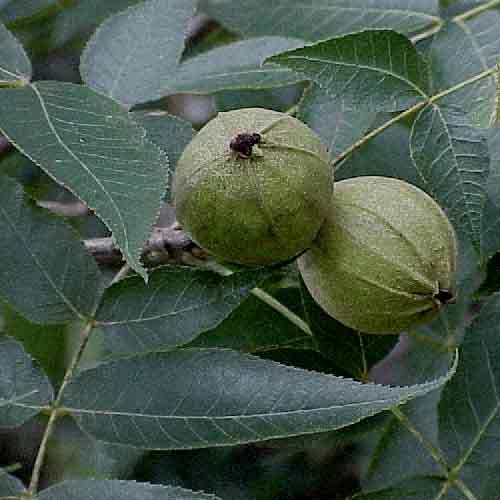
Pignut Hickory
by Sharon LaPlante
Pignut
hickory, Carya glabra, is a large deciduous tree in the Juglandaceae
or walnut family. Mature height
varies from 70 to 100 feet. Pignut
hickory is a common component of hardwood hammocks in our area and can be found
growing in hammocks that range from xeric (dry) to mesic (moist) as far south as
Manatee County. It is generally
found throughout the southeastern United States.
Carya
glabra is the only documented hickory for Hernando County.
It occurs Citrus County along with mockernut hickory (Carya tomentosa)
and water hickory (Carya aquatica).
Pignut hickory is distinguished from other hickories by all parts of the
leaves being glabrous with only occasional hairs in the vein axils.
Hickory
is a very long-lived tree with a life span of up to 250 years.
The crown of mature trees is relatively narrow and oblong.
Limbs have a pendulous habit. The
bark of mature trees is gray with shallow fissures in a pattern that is diamond
shaped.
The
leaves are alternate, compound, and odd-pinnate, with five to seven leaflets and
may be 8-16 inches in length. Leaflets
are lanceolate, elliptic or oval in shape with serrate margins, 1-2 inches in
width and 3-6 inches in length. Carya
glabra leaves are distinguished from other hickories by the lack of hairs
(glabrous) or occasional small tufts of hairs in the vein axils on the lower
surfaces. The leaves turn yellow in
the fall before they drop.
Tent
caterpillars can be found in silken 'tents' among the foliage in the spring.
They do not harm the tree and actually provide an important food source
for many birds and their nestlings, specifically yellow billed cuckoos.
Male
and female flowers occur on the same tree (monoecious) and are born in the
spring. Male (staminate) flowers
are 2-3 inch long catkins and are born in the leaf axils on growth from the previous season
and appear before the female flowers. Female
(pistillate) flowers appear in two to five flowered spikes and
are born from shoots of the current year.
Nuts
are not produced until the tree is approximately 30 years of age and peak
production occurs from 75 to 200 years of age.
The nuts are edible, but the palatability differs from tree to tree.
Hickory
nuts were a staple food source for Native Americans. Gathered in the fall they were eaten out of hand and
processed to make a form of 'butter' and a 'milk' type liquid that were used in
cooking. Many were also stored for
future consumption. The inner bark
of the hickory tree was also used to make cord and rope.
Hickory
trees provide food and shelter for a variety of wildlife.
In our area gray, fox, and flying squirrels use the nuts and leaf buds as
a staple food source and build nests within the limbs.
Deer and other mammals may occasionally browse the foliage.
Many
birds forage on the insects that are attracted to the spring flowers and use the
foliage for shelter and nesting.
The
bark, twigs, and hulls of the nuts can be used to produce a brown dye.
Hickory
is a larval food for a number of giant silk moths - the luna moth, polyphemus
moth, and royal walnut moth.
Brown,
Robin C. Florida's First People.
Pineapple Press: Sarasota, FL. 1994
Nelson,
Gil. The Trees of Florida.
Pineapple Press: Sarasota, FL 1994
Godfrey,
R.K., and J.W. Wooten. Trees,
Shrubs, and Woody Vines of Northern Florida and Adjacent Georgia and Alabama.
University of Georgia Press: Athens, GA
1988
Martin,
Alexander, et al. American
Wildlife & Plants: A Guide To Wildlife Food Habits.
Dover Publications: New York, NY. 1951
Nelson,
Gil. The Trees of Florida.
Pineapple Press: Sarasota, FL 1994
Wunderlin,
Richard P. Guide to the Vascular
Plants of Florida. University
Press of Florida: Gainesville, FL. 1998
Return to the Main Page
All material on this site © Hernando Chapter of the FNPS. The materials on this website may be copied and distributed without permission, provided that it is used for non-commercial, informational or educational purposes, and you acknowledge this site and the Hernando Chapter of the Florida Native Plant Society as the source of publication.